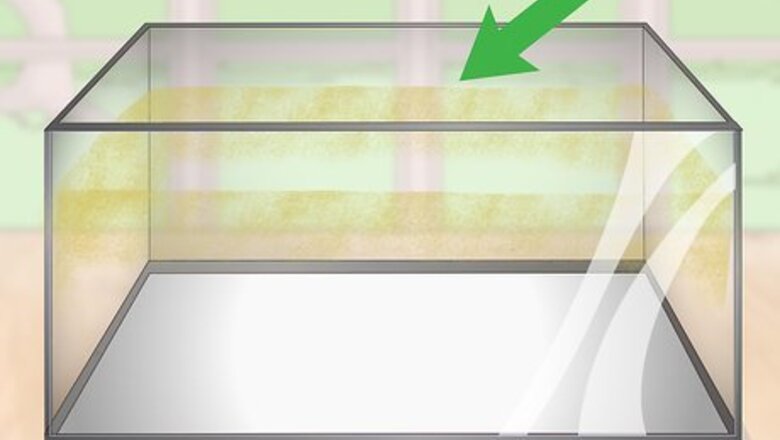
views
Setting Up Your Aquarium
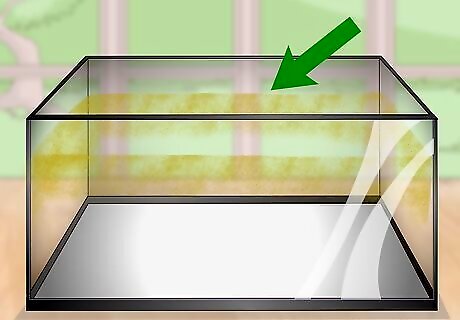
Choose a tank large enough for your mouse. Mice need lots of space. If you're keeping one mouse, buy an aquarium that is at least 30 centimetres (12 in) tall, 30 centimetres (12 in) wide, and 45 centimetres (18 in) long, roughly the size of a 10 US gal (38 L) aquarium. Wide and shallow aquariums are best because they will give your mouse plenty of room to run around and allow for better air circulation. If you have other mice, you should buy a larger aquarium. Add .5 cubic feet (0.014 m) of space for each additional mouse that will be living in the cage. You should be able to find an aquarium at your local pet store.
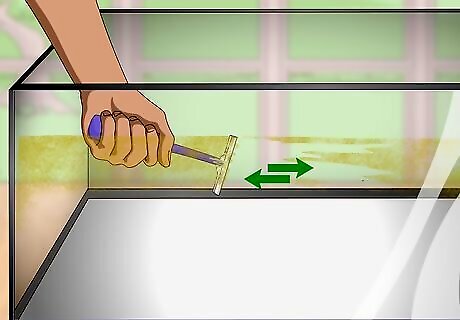
Clean debris from your old aquarium before using it. If you are using an old aquarium that housed fish or other rodents, clean out any debris. Then rinse it out with cool tap water and thoroughly wipe down the tank's bottom and sides with a clean cloth. Use a glass razor scraper to remove any tough hard-water deposits. Get the glass wet before scraping for best results.
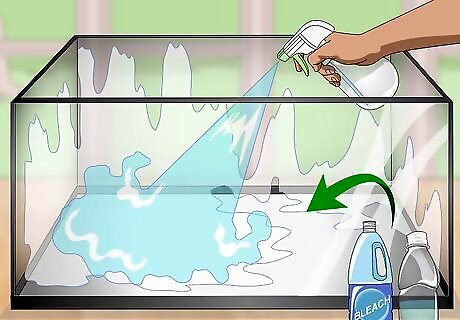
Sanitize the aquarium with a solution of household bleach and water. Once you've cleaned debris out of your tank and have wiped it down, spray all surfaces with a solution of 9 parts water and 1 part household bleach. Let the solution sit for 10-15 minutes and then thoroughly rinse the aquarium twice. Sanitize your aquarium even if it has never been used. After cleaning and rinsing, let the aquarium air dry. Don't use a bleach mixed with detergent to clean your aquarium. Detergents leave residue that may not be safe for your mouse.
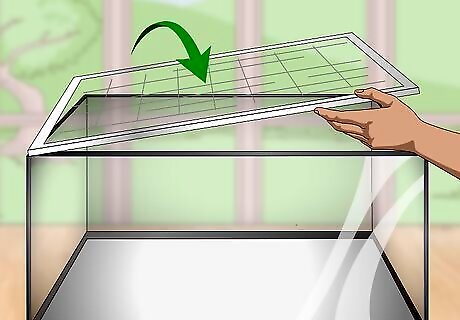
Put on a secure wire lid that allows for good ventilation. One of the points of concern about using an aquarium as a mouse cage is that it allows for less ventilation than a wire cage. For proper ventilation, use a wire lid or tank topper and keep the aquarium in a cool and well-ventilated room at a comfortable level of humidity. Poor ventilation can cause health problems for your mouse. You can find a wire lid for your aquarium at your local pet supply store. The gaps in the wire lid should be no more than a ⁄2 in (1.3 cm) apart. Your mouse will be comfortable in a room with a relative humidity of anywhere between 40 – 70 percent.
Equipping the Aquarium
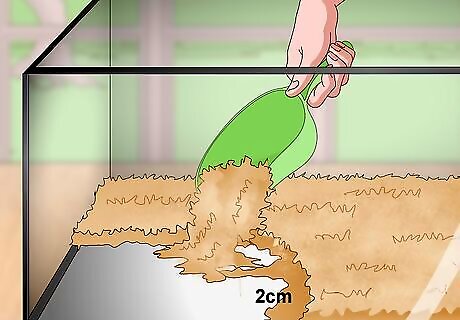
Build a layer of bedding at least 2 centimetres (0.79 in) thick. Use cellulose based chips or shredded filter paper as bedding material. These materials will help absorb your mouse's feces and urine. This layer should be deep enough for your mouse to dig in. Avoid using cedar shavings in your mouse's cage, as they can cause liver disease and respiratory problems in mice. The oils in pine shavings can also cause skin problems for mice.
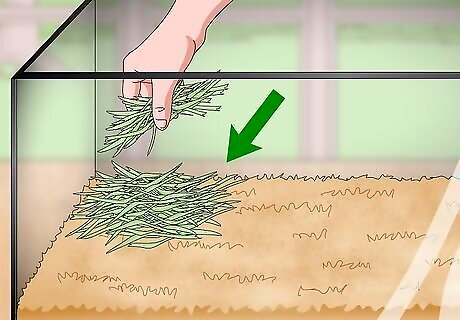
Add hay or shredded paper as nesting material. After covering the bottom of the aquarium with a layer of bedding, add some nesting material for your mouse. Hay and shredded paper are popular options, and you can also use paper tissues. This bedding will give your mouse comfortable materials with which to nest. Avoid using cotton wool and other fluffy bedding material. If swallowed, fluffy bedding material can cause harm to your mouse. Your mouse could also get tangled in fluffy materials that are difficult to break apart.
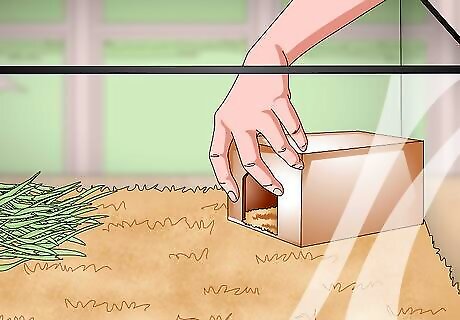
Provide your mice with a small home. Mice like dark and dry places to sleep and rest. A small wooden hut or cardboard box would make an ideal hideaway for your mouse. If you decide to use a cardboard box, make sure that it is free of ink. Inks can be toxic for mice. Some pet stores also sell small plastic domes that you could use as a house for your mouse. Small mouse huts vary in size and shape, but most are around 5 inches (13 cm) in length, 5 inches (13 cm) in width, and 3–5 inches (7.6–12.7 cm) in height.
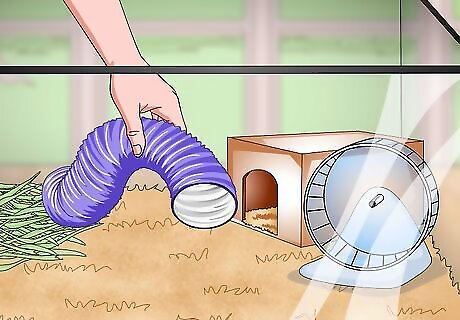
Give your mouse some toys. Now that you've added nesting, bedding, and a small shelter, the next step is to add some larger objects that your mouse will enjoy climbing on, around, and something for them to play with. You can either purchase mouse tunnels and other climbing structures from your local pet store, or you can reuse things you have lying around the house that you would otherwise throw away or recycle. Adding toilet paper and paper towel rolls would give your mouse some fun tunnels to hide in. Wooden boxes, shoe boxes, and empty oatmeal containers, in addition to a small mouse hut, would also be fun, interesting additions to your mouse's home. You should not add a wire exercise wheel to your mouse's aquarium home. Your mouse's long tail can easily get stuck in the wire, potentially causing an injury. If you want to add a wheel to your mouse's cage, buy a plastic exercise wheel.
Maintaining Your Mouse's Home
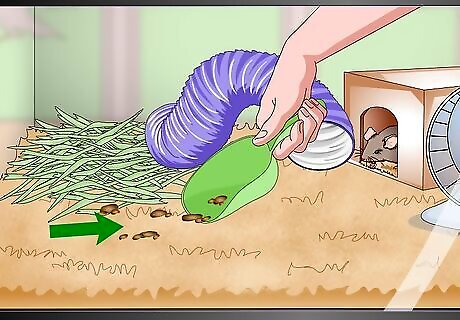
Clean your mouse cage regularly. Your mouse will produce a surprising amount of urine and feces in a day's time. If left alone, a buildup of urine and feces can lead to infections in your mouse. So, to keep your mouse healthy and happy, keeping to a regular cleaning schedule is essential. Cleaning the cage once a week is generally okay, but monitor your mouse to see if more frequent cleanings are necessary. If the cage begins to smell, you should increase the frequency of your cleanings. Use a pet-safe cleaner to clean the cage. You can find one at your local pet store.
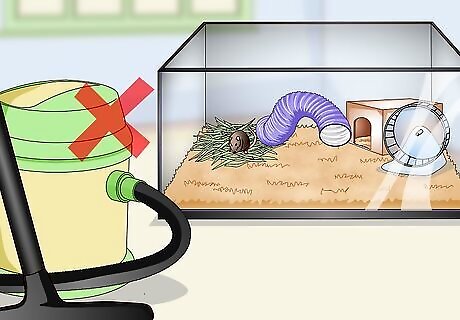
Keep your mouse's home away from high-pitched or loud noises. Make sure your mouse's home is far from computers, TVs, alarms, door-bells, vacuum cleaners, and other household appliances that produce loud or high-pitched sounds. Mice are very sensitive to these noises.
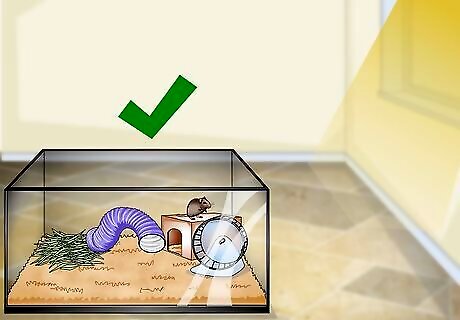
Place your mouse cage in an area that receives indirect natural daylight. Mice need to be exposed to natural light to stay healthy. Make sure, however, not to put the cage in direct sunlight. The inside of the aquarium can become dangerously hot if placed in direct sunlight. You should also refrain from turning on any bright lights near your mouse's cage.
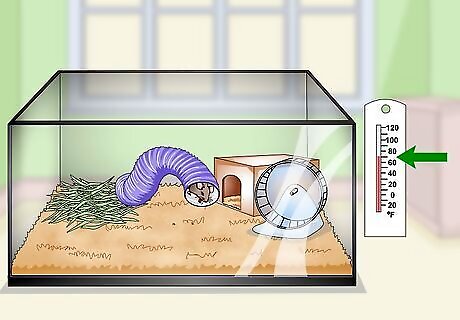
Keep your mouse in a temperate room with comfortable humidity. In addition to avoiding direct sunlight, keep your mouse cage out of areas that experience extreme temperatures. Don't put the mouse cage in a garage, shed, or any room where the temperature isn't kept in a comfortable range at all times. You should also keep the cage out of areas with high humidity. Keep the temperature of the cage at 18–22 °C (64–72 °F). Keep the relative humidity of the room anywhere between 40 – 70 percent. These guidelines are especially important if you decide to keep your mouse in an aquarium instead of a wire cage.

















Comments
0 comment